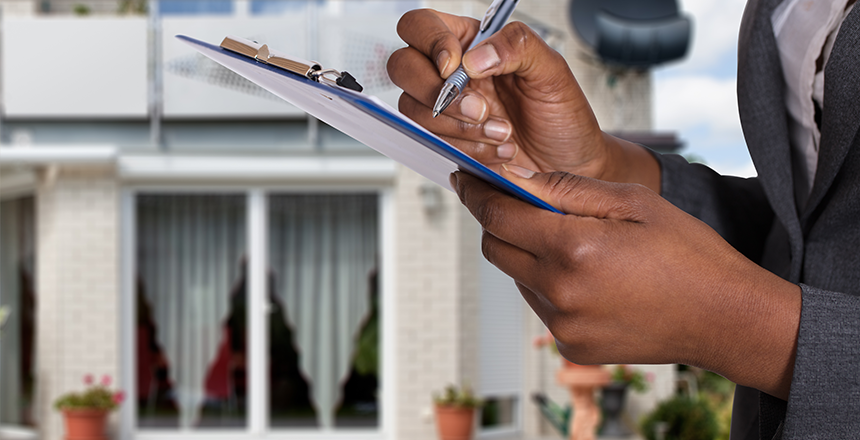Be prepared! Your insurance company may require a home insurance inspection.
Many insurance companies will conduct an inspection to evaluate the liability of insuring your home. These inspections help companies avoid potential losses that were not disclosed during the application process. Based on the results of your inspection, your insurance company will adjust your premium. On the other hand, they may provide you with a list of mandatory repairs that need to be made before they can insure your home.
You may be able to get homeowners insurance without an inspection. For example, if you recently bought a home and it was inspected or had it examined in the last year, you may not need another inspection. However, you might be required to get one if you’re a new customer, if you live in an older home, or if your home’s replacement cost is too difficult to determine without an inspection.
Learn more about homeowners insurance here.
How to prepare the outside of your home for a home insurance inspection.
1. Check your shingles
Check your roof for any loose or missing shingles. Remove outside debris such as leaves and twigs. Lastly, check for decay and mold.
2. Check your gutters
Confirm that your gutters are securely attached and remove any debris or blockages.
3. Look for cracks in your foundation
If there are cracks in your foundation, it can be a claim waiting to happen. Seal and paint over any cracks that you find.
4. Clean your chimney
Clear your fireplace of any debris, making sure the flue is clear and functionable. All bricks should be intact and proper accessories should be nearby.
5. Trim trees
Branches should not be touching your roof or hanging over your home.
6. Check for cracks in siding, doors, and windows
In addition to checking for cracks in siding, doors, and windows, make sure that window/door frames are intact and sealed. Doors should also be lockable and secured.
How to prepare the inside of your home for a home insurance inspection.
1. Check smoke detectors
Make sure your smoke detectors work and replace batteries if needed.
2. Inspect your fire extinguishers
Check the expiration date on your fire extinguishers and replace any that have expired.
3. Check windows and doors for leaks
Make sure your windows and doors are lockable and have no leaks. Additionally, ensure there is no termite damage.
4. Have your HVAC system cleaned
One of the most important things to check for in a home inspection is the correct installation of electrical systems. Verify the last inspection date, check for exposed wires, rust, leaks, mold, or mildew.
5. Check your basement and attic for leaks or pest damage
Be extra mindful of signs of water damage, mold, and pest damage.
Disclaimer: This blog post is meant for general informational purposes only and may not reflect your specific policy.


